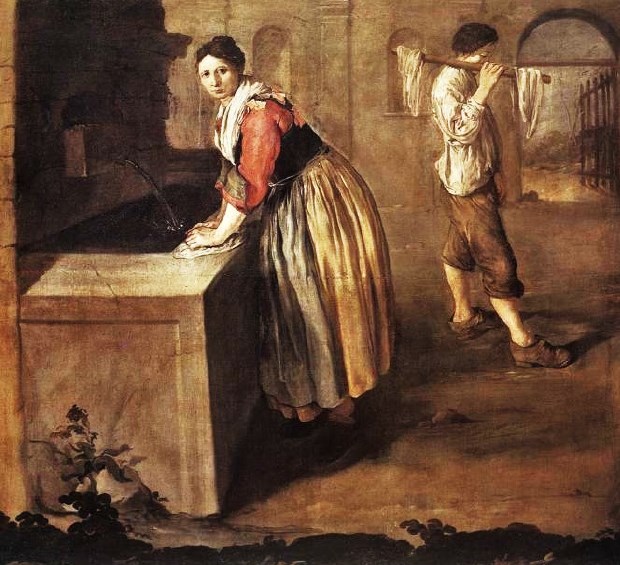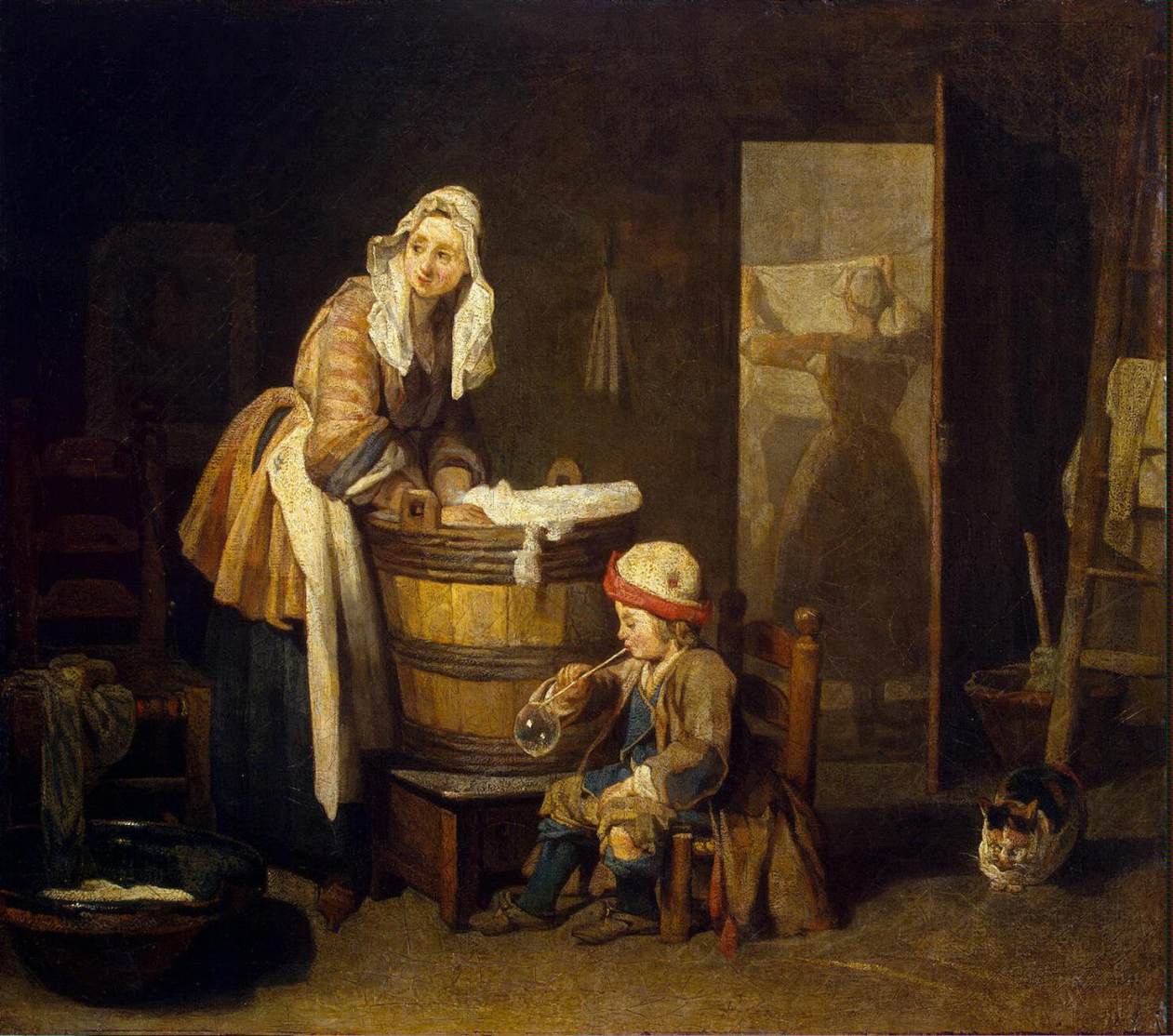Whalebone Stays: Who Wore Them – Part 5
Images of Plebeian Women that are Unclear
We have so many images gathered which we thought showed signs of a more controlled body look or which we thought could be used be used for the non-wearing stay argument but when we came to use them we blanched – unconvinced that they truly proved the point. We then thought they don’t have to go wasted, we could just lay them before you and see what you think!
First image –
-First Image: We have ‘The Laundress’ painted by Chardin c.1730. There are so many interesting things in this painting.For starters, the front lady is an awesome figure – from down to her shoes, to her full-lappet cap, to her pocket openings, to her apron. She is also wearing a loose bedgown which means it’s hard to tell what she’s wearing underneath. Brooke, in her book ‘Dress and Undress’ says that just because a dress was loose, it doesn’t mean that Stays weren’t worn. She was mainly talking about Contouches and those relaxing Undress gowns of the early part of the decade but the sentiment is the same. The lady in the shadows at the back is who we originally decided was wearing stays but bit by bit that confidence eeked away and we now aren’t sure. She could just have a trim figure and a good pair of strong bodies on! Just because we think they look like stays doesn’t mean they are. There does seem to be the smallest of indentations that could be the beginnings of the laced up section but it’s so vague there is no way to be sure. The general assumption is that if it has lacing at the back it is far more likely to be a pair of Stays and if there is no back-lacing, or centre front lacing then it is far more likely to be a pair of bodies. This is not absolute but perhaps it’s fair to say that percentages seem to work towards this idea. So with this one we are not sure! Please feel free to comment.
 This next image is by Giacomo Ceruti and entitled The Laundress. It was painted in 1736. Well apart from the big question mark over the bodice section of her outfit, the other interesting features in this painting are the red/dark orange shift. I’ve almost NEVER seen a coloured shift/shirt/smock before nor with the brown facings/cuffs that she has turned up. This could be a bedgown of sorts and obviously we’re dealing with a slightly different entity here; it being an italian painting, but it’s just an unusual mix of clothes. It seems so strange to see wear a pair of bodies or even a pair of stays over an outer gown like this. There is no guarantee that this is not some sort of regional dress. The rest of her outfit is fairly bog-standard. She wears a yellow long skirt with a long apron, a white handkerchief round her neck and heavy looking shoes.
This next image is by Giacomo Ceruti and entitled The Laundress. It was painted in 1736. Well apart from the big question mark over the bodice section of her outfit, the other interesting features in this painting are the red/dark orange shift. I’ve almost NEVER seen a coloured shift/shirt/smock before nor with the brown facings/cuffs that she has turned up. This could be a bedgown of sorts and obviously we’re dealing with a slightly different entity here; it being an italian painting, but it’s just an unusual mix of clothes. It seems so strange to see wear a pair of bodies or even a pair of stays over an outer gown like this. There is no guarantee that this is not some sort of regional dress. The rest of her outfit is fairly bog-standard. She wears a yellow long skirt with a long apron, a white handkerchief round her neck and heavy looking shoes.




